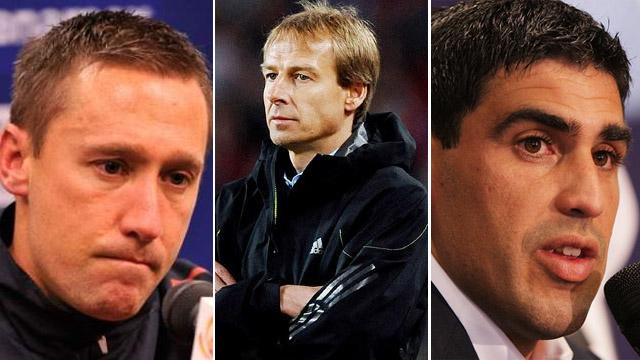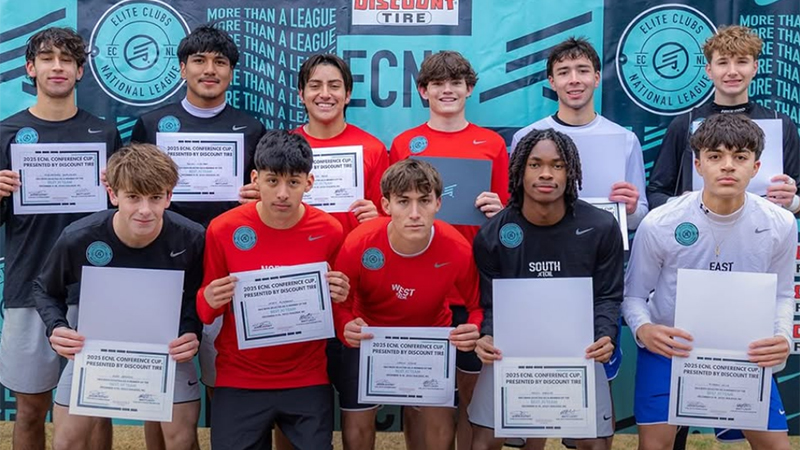U.S. Soccer needs to stay the course

March 28, 2012
I have been asked about a dozen times today what I thought of the U23 MNT’s nightmare exit from the Olympic Qualifying Tournament in Nashville Monday night. I find it hard to be eloquent about a kick to the stomach, so I wasn’t going to write anything, figuring the players ratings J.R. Eskilson and Travis Clark would suffice.
But then my friend and colleague J.R. wrote the following for the 91st Minute and I realized the Philistines were upon me, so I had to write this.
Here’s what I have to say: With Jurgen Klinsmann, Claudio Reyna, Tony Lepore and others, U.S. Soccer has finally instituted a top-to-bottom system of player development that is truly aimed at long-term, high-level success. The hardships faced by both the full national team and Caleb Porter’s U23 MNT as they try to implement a progressive style of play are not entirely surprising, but for our national team setup (full and youth) to abandon the mindset and course it has embarked upon would be a much greater tragedy than Monday’s very disappointing result vs. El Salvador.
We now have a setup where each of our youth national teams are taught a similar system of play that emphasizes possession, attacking and possession. One of the reasons Caleb Porter was selected for the U23 job is that he has been very successful with this in the college ranks at Akron, and is committed to his teams playing the right way.
It parallels what has taken place with Klinsmann on the full national level. His teams have had issues, but he has remained true to the cause, and I say this is a good thing. We need those kinds of coaches guiding our national teams.
Look. U.S. Soccer has shown how far it can go in international competition with a style of play that mostly involves defending. Playing 10-11 men behind the ball can probably get us out of the group stage at the World Cup (assuming the odd last-minute goal) and then that’s about it. We can mostly dominate CONCACAF that way, but when we run against the best soccer nations in the world, not being able to play a true attacking style that involves attacking from multiple points and styles and a midfield that wins and keep the ball, we will lose to the teams who can play the right way, nearly all of the time.
This is the true hurdle we now have to overcome and it does not take place overnight. A lot of the players currently being employed at the older national team levels have had very little experience being coached to play that way. It doesn’t mean they can’t learn it, but again, it will take some time. For the sake of the greater and loftier goals, it is imperative that we keep working at it from this approach, and avoid kneejerk reactions regarding coaches, formations, style of play and playing personnel.
At the younger age groups, the work being done via the USSF Development Academy and with the USSF Training Centers and scouting system is beginning to bear fruit. There is a clearer idea than we have had communicated before about what kind of player and team play is needed. The top-level coaches and scouts are communicating in a coordinated fashion with a purpose toward evaluation, identification and ultimately, better player development. There is finally a plan in place and it must be given a chance to take effect, no matter how it might affect some soccer baron’s old-time business fiefdom. I’ve been watching this up close for 10 years now and I’m telling you, we finally have a chance to get somewhere.
Each new cycle of U17 and U20 and then, full national team squads, will be receiving players who have played possession soccer, attacked via combination play, and developed actual 1v1 defending skill (rather than just relied on numbers behind the ball – this was a big issue with the U23s). As we produce more of these players, one can only hope that MLS teams will increasingly adopt such styles of play (what I’m seeing so far this season is not a cause for optimism) and those players will continue to develop as young professionals, the best of whom will then be the basis for the kind of youth and full national teams that can truly advance the cause of American soccer to the highest levels.
This can happen. It’s within perhaps a few years reach even, but we have to stay the course and be willing to suffer some tough moments in the meantime. Yes, there’s accountability for underperforming, but we have to take a mature view to discerning the difference between that, and giving the requisite amount of time for our players learning top to bottom how they must play in order to climb the proverbial mountain.
So even as we continue to push for greater reforms such as instilling the DA at younger age groups and expanding MLS Reserve schedules to a full season youngsters turning pro has a more certain player development payoff, let’s be sure that we do nothing to short-circuit the very real progress we are making to truly contend for the international stature we supposedly all want for the American game.
Headlines
- Recruiting Roundup: December 22-January 4
- Vote for Men's College Soccer Best Goal
- How Do I Get Scouted by TopDrawerSoccer?
- 2026 Women's Division I Transfer Tracker
- Vote for Women's College Soccer Best Goal
- TDS Girls Regional Rankings: Class of 2027
-
Draft Picks Who Can Make MLS Impact

-
Mid-Atlantic High School Roundup - Dec.

- ECNL Boys Conference Cup Best XI
-
Commitments: In-State Decision

Top 200/150 Club Player Rankings



